This article was medically reviewed by Jeremy Silverman, DMD. Jeremy Silverman is a Dentist and Founder of Peace of Mind Dental Studio in Chandler, Arizona. With a decade of professional dental experience, he focuses his practice on incorporating mental well-being into the core of oral care. He also partakes in continuing education and stays up to date with the newest techniques, technology, and products. Dr. Silverman holds a BA in Psychobiology from the University of California at Los Angeles and a DMD from Midwestern University. He is a member of the American Dental Association, Arizona Dental Association, and Central Arizona Dental Society. Dr. Silverman is also Laser Certified by the World Clinical Laser Institute.
wikiHow marks an article as reader-approved once it receives enough positive feedback. This article received 27 testimonials and 100% of readers who voted found it helpful, earning it our reader-approved status.
This article has been viewed 1,101,986 times.
Research shows that wearing braces can improve your oral health as well as straighten your teeth.[1] Experiencing a little pain after you get your braces on or tightened is normal, and you might experience mouth soreness or sensitivity for the next 2 to 3 days. Experts note that there are a few ways you can ease your pain using home remedies or over-the-counter products.[2]
Steps
Using Home Remedies
-
1Try cold drinks. If your braces are bothering you, try cold drinks. Ice cold water and cold juices or soft drinks can help ease the pain of your teeth and gums. Cold liquids can cause a numbing sensation in the mouth, resulting in a reduction of inflammation and pain.
-
2Eat cold foods. As cold drinks can provide pain relief, you could try cold foods to see if they have a similar effect. Try drinking chilled smoothies or eating ice cream or frozen yogurt or sugar-free popsicles. You can also refrigerate fruit, veggies, and other healthy foods so they're cool when you eat them. Cold fruits, like chilled strawberries, may have some effect on strengthening the gums.
- Do not, however, bite into any frozen foods, and avoid using your front teeth. Doing so may cause cracks in your enamel, which can be difficult to repair and increase sensitivity.
Advertisement -
3Try an ice pack. Icing sore areas can decrease inflammation, lessening pain. Applying an ice pack to the outside of your mouth may reduce pain. Remember, do not apply a store bought ice pack directly to bare skin. Wrap it in a towel or cloth before use to avoid frostbite and other complications.
-
4Use warm salt water rinses. A salt water rinse is an easy home remedy that help ease pain for some. It's quick and easy to use.[3]
- Mix about a half a teaspoon of salt into a glass of warm water. Mix until the salt is dissolved.
- Rinse your mouth with the solution for about 30 seconds and then spit it out into a sink.
- You can also rinse with chamomile tea, green tea, or ginger tea, which may have an anti-inflammatory effect. Rinse twice a day: for one minute in the morning and two minutes before going to bed.
-
5Stick to soft foods. Teeth tend to be very sensitive after braces are tightened or adjusted. Softer foods can help reduce pain and irritation.[4]
- Go for foods that do not require much movement of the teeth. Things like mashed potatoes, smoothies, puddings, soft fruits, and soups are good options.
- Try to avoid spicy foods and hot drinks as these can cause gum irritation.
Trying Pain Reducing Products
-
1Take over-the-counter pain medications. Simple over-the-counter pain medications may reduce swelling, inflammation, and pain associated with new braces. Try using pain killers and see if you notice an effect.
- Ibuprofen can help reduce pain and swelling associated with new braces. Take the medication as recommended on the bottle. Avoid alcohol when taking pain medications.
- If you're on any existing prescription medication, it is important to talk to a pharmacist to make sure over-the-counter meds will not interact poorly with whatever medication you're taking.
-
2Use dental products designed to relieve pain. Ask your orthodontist about special gels and medicines designed to reduce pain. There are many dental products that can ease the transition into new or tightened braces.[5]
- Several rinses and gels have medications in them that help ease pain. Follow all instructions when taking these medications. Ask your dentist if you have any questions about the medications.
- Bite wafers are products shaped to fit your teeth. You bite down on these products for a set period of time, which encourages an increase in blood circulation that results in less pain. Chewing gum can also help reduce pain.[6]
-
3Try barrier products. Barrier products are designed to provide some separation between your braces, teeth, and gums. This can help prevent irritation that causes pain and soreness.[7]
- Dental wax is one of the most common and easy to use barrier products. Your dentist will give you a container of wax and you simply break off a piece and rub it on the areas that are sore. Make sure you take dental wax off before brushing your teeth as dental wax can get stuck in your toothbrush.
- There are also barrier products that are somewhat similar to whitening strips, known as comfort strips. You place a strip over your teeth and it forms a protective barrier between your braces, teeth, and gums. Ask your dentist about using comfort strips when you get your braces put in place.
Expert Q&A
Did you know you can get expert answers for this article?
Unlock expert answers by supporting wikiHow
-
QuestionWhat helps with braces pain at home?
 Jeremy Silverman, DMDJeremy Silverman is a Dentist and Founder of Peace of Mind Dental Studio in Chandler, Arizona. With a decade of professional dental experience, he focuses his practice on incorporating mental well-being into the core of oral care. He also partakes in continuing education and stays up to date with the newest techniques, technology, and products. Dr. Silverman holds a BA in Psychobiology from the University of California at Los Angeles and a DMD from Midwestern University. He is a member of the American Dental Association, Arizona Dental Association, and Central Arizona Dental Society. Dr. Silverman is also Laser Certified by the World Clinical Laser Institute.
Jeremy Silverman, DMDJeremy Silverman is a Dentist and Founder of Peace of Mind Dental Studio in Chandler, Arizona. With a decade of professional dental experience, he focuses his practice on incorporating mental well-being into the core of oral care. He also partakes in continuing education and stays up to date with the newest techniques, technology, and products. Dr. Silverman holds a BA in Psychobiology from the University of California at Los Angeles and a DMD from Midwestern University. He is a member of the American Dental Association, Arizona Dental Association, and Central Arizona Dental Society. Dr. Silverman is also Laser Certified by the World Clinical Laser Institute.
Dentist
-
QuestionWhy do they hurt so bad after you get them tightened?
 Cristian Macau, DDSDr. Macau is an oral surgeon, periodontist, and aesthetician at Favero Dental Clinic in London. He received his DDS from Carol Davila University of Medicine in 2015.
Cristian Macau, DDSDr. Macau is an oral surgeon, periodontist, and aesthetician at Favero Dental Clinic in London. He received his DDS from Carol Davila University of Medicine in 2015.
Doctor of Dental Surgery The main metal wire applied to your brackets delivers an intense force which spreads to every single tooth connected in the chain. The pressure caused by the force is distributed to the entire vascular and nervous system of your teeth creating a response which is transformed into a pain sensation in a particular area of your brain.
The main metal wire applied to your brackets delivers an intense force which spreads to every single tooth connected in the chain. The pressure caused by the force is distributed to the entire vascular and nervous system of your teeth creating a response which is transformed into a pain sensation in a particular area of your brain. -
QuestionI feel like my teeth at more sensitive than usual. I tried ice cream and my teeth were freezing. Do you know why?
 Cristian Macau, DDSDr. Macau is an oral surgeon, periodontist, and aesthetician at Favero Dental Clinic in London. He received his DDS from Carol Davila University of Medicine in 2015.
Cristian Macau, DDSDr. Macau is an oral surgeon, periodontist, and aesthetician at Favero Dental Clinic in London. He received his DDS from Carol Davila University of Medicine in 2015.
Doctor of Dental Surgery When teeth move through the bone and rearrange in order to reach the correct position, inflammation of the tissue surrounding them produces an increased sensitivity. The entire system represented by ligaments, nerves and vessels is inflamed and obviously more sensitive than before so reacts faster to external stimuli such as cold.
When teeth move through the bone and rearrange in order to reach the correct position, inflammation of the tissue surrounding them produces an increased sensitivity. The entire system represented by ligaments, nerves and vessels is inflamed and obviously more sensitive than before so reacts faster to external stimuli such as cold.
References
- ↑ https://jada.ada.org/article/S0002-8177(14)62340-0/pdf
- ↑ https://www.aaoinfo.org/blog/handling-orthodontic-issues-at-home/
- ↑ https://orthodonticsaustralia.org.au/why-do-your-braces-hurt/
- ↑ https://orthodonticsaustralia.org.au/why-do-your-braces-hurt/
- ↑ https://academic.oup.com/ejo/article/29/2/170/522873?login=false
- ↑ http://www.ncbi.nlm.nih.gov/pubmed/22284284
- ↑ https://www.aaoinfo.org/blog/handling-orthodontic-issues-at-home/
About This Article
To take away the pain of new or tightened braces, try drinking a cold, iced beverage, like water or juice, which can numb your mouth and reduce swelling. You can also mix 1/2 teaspoon of salt into a glass of warm water and then rinse your mouth with it to ease the pain. Or, you can apply an ice pack wrapped in a cloth or towel to the areas that are hurting to reduce the inflammation and pain. For more advice from our Dentist co-author, like how to use over-the-counter products to ease pain caused by braces, scroll down!
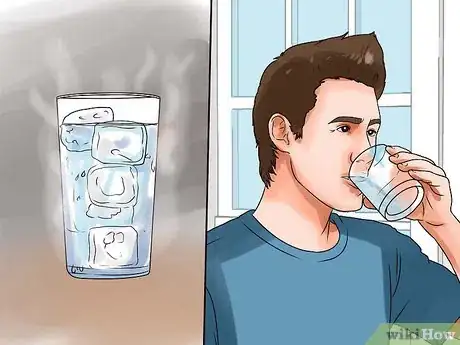
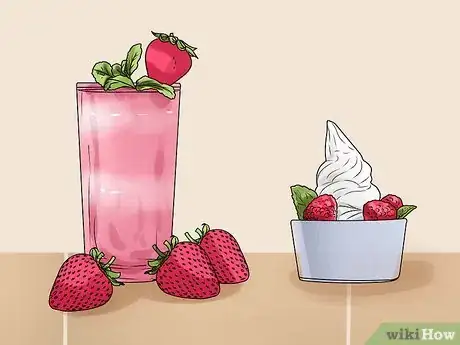
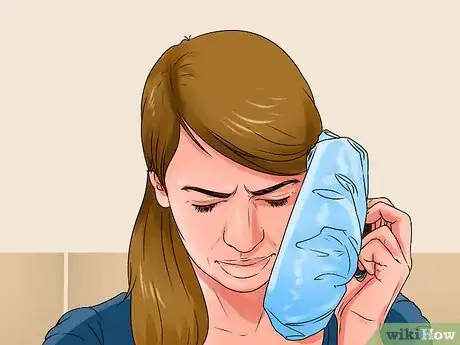
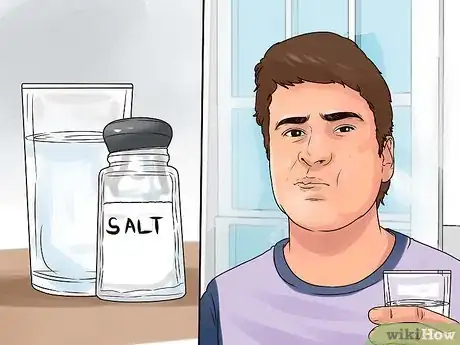
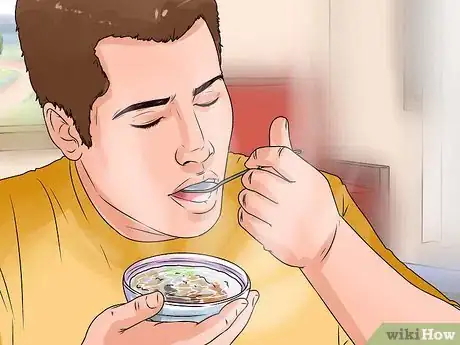

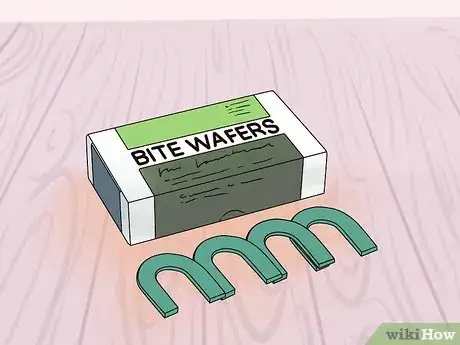
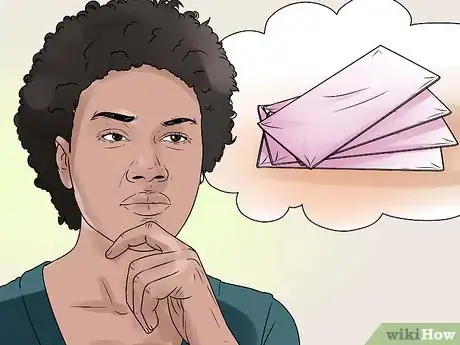

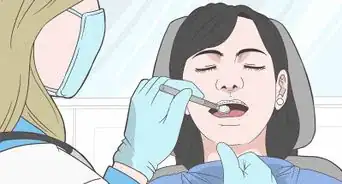

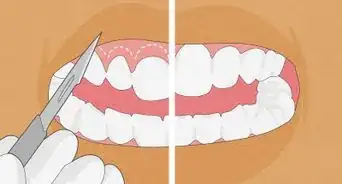

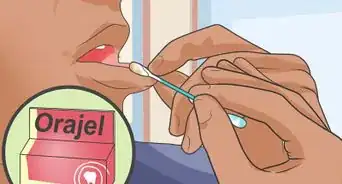

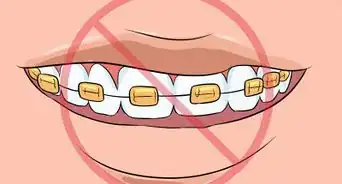
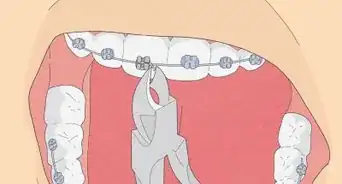
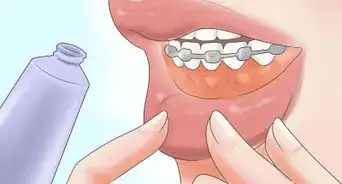
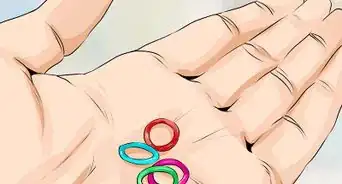
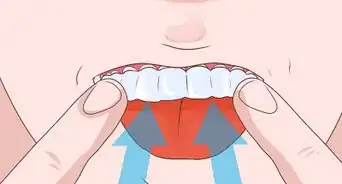

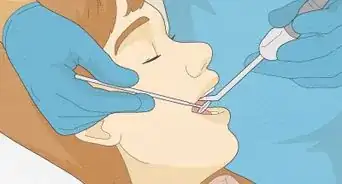











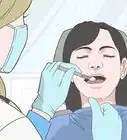
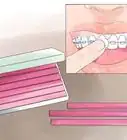
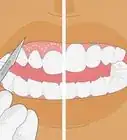



































Medical Disclaimer
The content of this article is not intended to be a substitute for professional medical advice, examination, diagnosis, or treatment. You should always contact your doctor or other qualified healthcare professional before starting, changing, or stopping any kind of health treatment.
Read More...